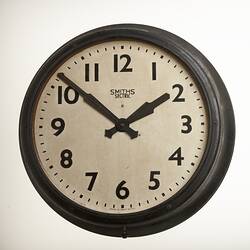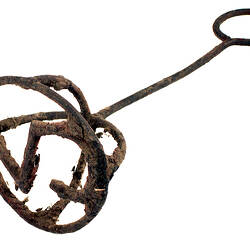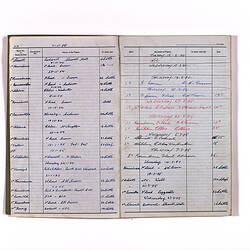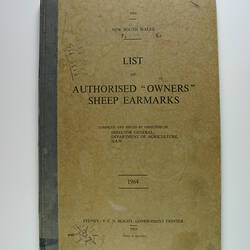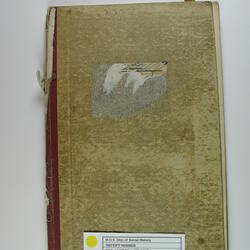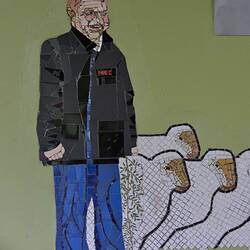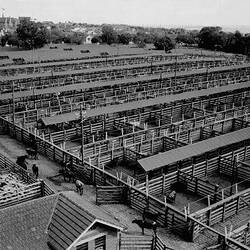The Newmarket Saleyards were spread over 24 acres and held up to 1,196 sheep pens, 232 bullock pens, 300 calf pens, drafting races, holding yards, lane outlets, transport loading and unloading ramps, and a scale weighing area. By the 1930s the consistently high prices achieved at Newmarket reflected its premier place as the livestock centre in Australia, competing successfully with livestock markets of the United Kingdom and United States. Newmarket was said to be the barometer of price level for livestock in Australia and in its prime was recognised as the largest live sheep and lamb auction market in the world.
During the peak seasonal periods approximately 250,000 sheep and lambs could be handled in a one-day operation at Newmarket. This was achieved by filling and emptying the pens twice during the day's sale. On such days there were usually about 300 meat operators, and 1,200 vendors, buyers, stockmen, drovers, administration staff and interested on-lookers present. In 1944, an annual world record was achieved at Newmarket with the sale of 2,502,240 sheep, 3,088,658 lambs and 936,066 store sheep; sales totalling over 6.5 million sheep. In a twenty-two week period in 1983, sales at Newmarket of 91,262 store cattle grossed proceeds of $180 million.
On Sale Days the bell in the bell tower on the agents' building would be rung at 8am to signal the start of selling. Sales of particular classes of livestock were held at certain times at Newmarket. The preservation of the right of the Newmarket Saleyards to operate on any day was controlled by an Act of Parliament on 11 October 1935. The Act declared that no (fat) sheep should be sold at the Newmarket Saleyards on any other day than a Tuesday or Thursday, while store sheep and stud sheep could be sold on any day other than a Sunday or public holiday. For example, fat lambs, fat sheep and store sheep were sold on Tuesdays; Wednesday was the sale of bullocks and calves; Thursday saw combined sales of fat lambs, sheep and cows; while Friday was reserved for milking sales and leftover stock.
Newmarket Saleyards - Record Sales
1872 (Annual Total): 1,031,127 sheep & lambs; 67,699 cattle; 4,998 calves
1898 (Annual Total): 1,202,011 sheep & lambs; 91,635 cattle
1903 (Annual Total): 1,335,445 sheep & lambs; 99,213 cattle
1938 (Weekly Average): 100,000 sheep & lambs; 6,800 cattle
1944 (Annual World Record): 2,502,240 sheep; 3,088,658 lambs; 936,066 store sheep; totalling over 6.5 million sheep
1953 (One Day Record): 114,280 fat sheep & lambs; 31,643 store sheep; 20,000 extra sheep sold privately prior to reaching saleyards. At least 1,000 railway trucks were required for this day's yarding plus in excess of 300 motor transports.
1973 (Annual Record): 650,290 cattle
1976 (Weekly Yarding Record): 22,479 cattle
References:
Vincent, K. 1992, On the fall of the hammer: a personal history of Newmarket saleyards, Lee White ed, State Library of Victoria, Melbourne.
More Information
-
Keywords
-
Authors
-
Article types


